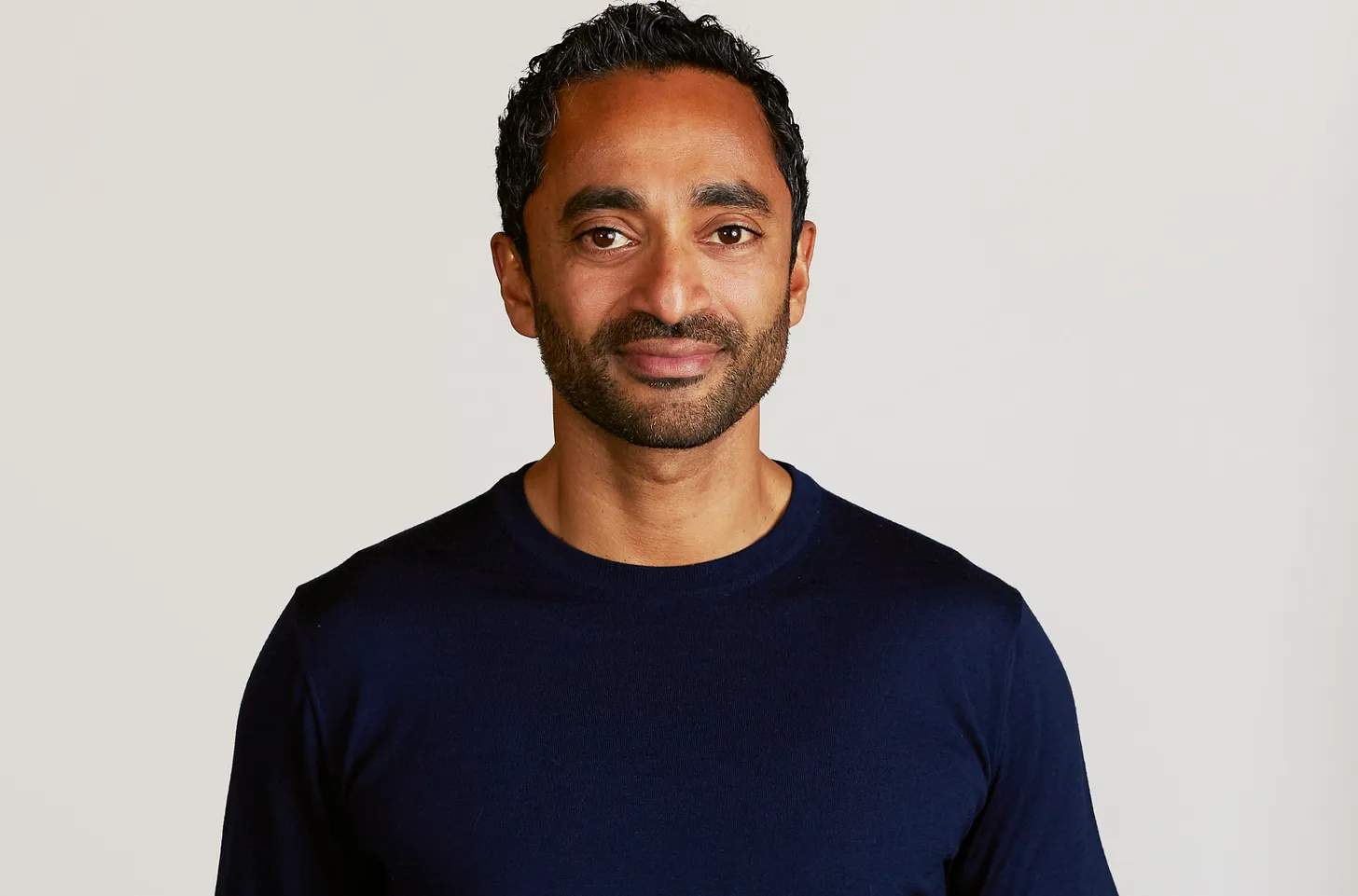Financial publications report Chamath Palihapitiya’s net worth between $1 billion and $4 billion, though estimates vary significantly. The Sri Lankan-born Canadian-American venture capitalist earned the nickname “SPAC King” and became one of Silicon Valley’s most prominent investors.
Palihapitiya’s path to billions started at Facebook, where he worked as a senior executive from 2007 to 2011. His leadership of the user growth team played a crucial role in helping Facebook reach one billion users. The next chapter of his career began with founding Social Capital, which now manages assets exceeding $1 billion. His smart investments in tech companies like Slack, Box, and Yammer brought remarkable returns.
Financial experts predict Palihapitiya’s net worth will fluctuate between $156 million and $1.5 billion by 2025. These projections reflect his investment portfolio’s volatility and venture capital’s changing digital world. This piece delves into Palihapitiya’s wealth-building journey from his Facebook days to his emergence as a leading venture capitalist and SPAC investor.

Chamath Palihapitiya’s Net Worth in 2025
Silicon Valley’s prominent investors have complex financial trails that create a maze of conflicting reports. Chamath Palihapitiya’s wealth in 2025 fascinates financial analysts and tech enthusiasts who keep speculating about the actual numbers.
Latest estimates and sources
The 2025 wealth valuations for Chamath Palihapitiya vary a lot based on which financial publication you read. Finding accurate wealth figures is like searching for that perfect hidden restaurant – you need to look beyond the obvious sources.
His net worth calculations depend on several key factors:
- Social Capital’s performance as a venture capital firm
- His SPAC investment returns
- Tech company holdings in private sector
- Real estate and alternative investments
- Public position impacts from market volatility
Different financial publications use their own methods to estimate wealth. Some publications look at liquid assets, while others include private holding valuations. This leads to very different figures, though each source claims accuracy.
Comparison with 2023 and 2024 figures
Venture capital investments can be volatile, as shown by Palihapitiya’s financial path through 2023 and 2024. His net worth has moved up and down like currency exchange rates, based on market conditions and how his investments performed.
The SPAC boom’s aftermath left its mark on these numbers. Many of Palihapitiya’s SPAC investments faced market corrections after the original excitement died down. His reported wealth in 2024 showed these adjustments, painting a modest picture compared to earlier estimates.
His early investments in companies like Slack helped steady his portfolio. The difference between public market investments and private holdings shows why venture capitalists with diverse portfolios are hard to value accurately.
Chamath Palihapitiya net worth Forbes vs other sources
Forbes remains the gold standard for tracking wealth, with more conservative estimates than other publications. Their method focuses on assets they can verify and applies big discounts to holdings they can’t sell quickly. They also look at known debts and value private companies lower than their competitors do.
Bloomberg and Celebrity Net Worth often show higher numbers. These differences happen because these sources might:
- Value private companies differently
- Count assets that aren’t public knowledge
- Calculate ongoing venture earnings their own way
- Include brand value and influence in their math
Automated wealth tracking websites show the biggest differences from established financial publications. These systems struggle with venture capital portfolios because much of the value sits in private companies without market prices.
Fellow venture capitalists Jason Calacanis and David Sacks face similar valuation challenges. Silicon Valley’s interconnected investments make it tough to figure out individual net worth.
People who follow tech investors’ money need to understand these different methods. Just as experienced travelers know official exchange rates don’t tell the whole story, wealth metric followers realize headline numbers need deeper investigation.
Chamath’s path to wealth helps explain his current financial position. His Facebook stock options, venture investments, and SPAC activities each played their part. Each piece faces unique valuation challenges, which explains the wide range of estimates across publications.

Early Life and Education
The story behind every tech billionaire’s success has twists and turns nobody expects. Chamath Palihapitiya’s rise to wealth started from the most humble beginnings you could imagine.
Childhood in Sri Lanka and move to Canada
Born in Sri Lanka in 1976 to a family from the coastal city of Galle, Chamath Palihapitiya’s early life looked nothing like his future Silicon Valley success. His family moved to Ottawa when he was five years old after his father got a job at the Sri Lankan High Commission.
The move was just the start of bigger changes ahead. The family asked for refugee status in Canada in 1986 after his father’s diplomatic role ended. They had no choice – his father’s public criticism of violence against Tamils during the Sri Lankan Civil War meant going back home could be deadly.
Life as permanent residents in Canada brought its own challenges. The family didn’t know their way around their new home. His father couldn’t find steady work and battled depression and alcohol problems that made everything harder at home.
Education at University of Waterloo
Palihapitiya showed he could excel in school despite everything happening at home. His education path included:
- Attending the prestigious Lisgar Collegiate Institute for his secondary education
- Studying at the University of Waterloo
- Getting his degree in electrical engineering in 1999
He showed the same drive during these years that would later make him famous. Tech leader Terry Matthews became the sort of person he looked up to back then.
First job and early financial struggles
Money was tight at home, so young Chamath started working early. He got his first job at a local Burger King when he was just 14.
“I grew up in a very kind of dysfunctional household on welfare. And that compounded a bunch of shit in my life that was not great. We were very focussed on money. It was a huge point of pressure and tension in the family,” Palihapitiya shared during a 2017 talk at Stanford University.
His mother kept the family going by working housekeeping jobs before moving up to become a nurse’s aide. They lived in a tiny 400-square-foot two-bedroom apartment right above a laundromat.
His work ethic stood out from the start. After Burger King, he landed a data entry job through a government program. Someone told him the summer project had too much work to finish on time. That just made him more determined to get it all done.
This drive helped him land his first real job at Newbridge Networks in Ottawa. He worked at the IT help desk under Terry Matthews, the same person he’d looked up to. He also spent some time as a trader at investment bank BMO Nesbitt Burns after graduating.
Looking at where he started and where he ended up shows what determination can do. This refugee kid who once flipped burgers became a billionaire venture capitalist by grabbing every chance he got.
Career Milestones: From AOL to Facebook
Chamath Palihapitiya climbed his way out of financial hardship and started a professional experience that rivals any globe-trotting adventure. Each career move became a stamp in his entrepreneurial passport.
Rise at AOL and becoming youngest VP
Palihapitiya’s corporate path began at Winamp, a small six-person company that developed the popular media player. His first professional step proved lucky when AOL bought Winamp, which gave him a chance to advance quickly. This acquisition sped up his career path like finding an unexpected shortcut in a new city.
His talent and drive pushed him through AOL’s corporate ranks. He achieved something remarkable in 2004 – he became AOL’s youngest vice president at just 26 years old. He led the instant messaging division and managed AOL Instant Messenger (AIM) during its peak as a dominant communication platform.
He stayed at AOL until 2005, then briefly worked at Mayfield Fund as a principal – his first step into venture capital. This brief stop prepared him for his next big move.
Joining Facebook and leading user growth
Palihapitiya joined Facebook in 2007 when the platform was barely a year old with about 50 million users. He knew Mark Zuckerberg from an earlier deal that connected AOL Instant Messenger to Facebook’s website.
He started as Vice President of User Growth, Product, and Marketing. The role gave him substantial responsibilities in “product marketing and operations”. He saw user growth as Facebook’s compass and picked Monthly Active Users (MAUs) as the key metric to guide all company efforts.
Effect on Facebook’s billion-user milestone
Palihapitiya’s evidence-based approach reshaped Facebook’s growth strategy. He pushed aside the focus on virality and directed his team toward three basic challenges:
- Getting people through the front door
- Guiding them to an “aha moment” as quickly as possible
- Delivering core product value frequently
This systematic approach led to a vital finding – new users needed to connect with “7 friends in 10 days”[131]. This simple rule guided Facebook’s growth team and came up at every company meeting and Q&A session.
The numbers tell Palihapitiya’s success story clearly. Facebook had 50 million users when he joined; this number grew to 700 million by his departure in 2011. His growth strategies helped Facebook reach its billion-user milestone. These achievements built his reputation as a growth strategist and contributed to his net worth growth before he launched Social Capital.
Building Social Capital and Investment Success
Starting a venture capital firm feels like exploring uncharted territory without a map. Chamath Palihapitiya learned this firsthand when he left Facebook’s secure environment in 2011.
Founding Social Capital in 2011
Palihapitiya started his most ambitious venture yet after leaving Facebook. He founded Social Capital with his then-wife, Brigette Lau. The firm aimed to support innovative startups that tackled difficult problems, much like a traveler who seeks authentic local experiences instead of tourist spots. This strategy proved successful quickly. External investors poured over $1.1 billion in assets by 2015.
Key investments: Slack, Box, Yammer
Several key ingredients contributed to Chamath Palihapitiya’s net worth growth. We invested early in companies that other VCs overlooked. His portfolio grew to include tech unicorns like Slack, Box, and Yammer. These investments yielded impressive returns. Social Capital generated $1.7 billion in cash and equivalents in 2019 alone. The firm’s funds delivered an impressive 997% compound growth since its 2011 inception.
Transition to single GP model
Palihapitiya’s investment experience took an unexpected turn by 2018. Social Capital went through major changes that included management turnover and a new strategy. The firm changed into a technology holding company that followed Warren Buffett’s Berkshire Hathaway model. Palihapitiya stopped minority investing and chose to acquire companies outright. Almost all external investors left after he declared investing “not a team sport”.
Comparison with other VCs like David Sacks and Jason Calacanis
Palihapitiya’s approach stands out from his “All-In” podcast colleagues. David Sacks, worth between $200 million and $2 billion, chose a more traditional path through his Craft Ventures. Jason Calacanis, valued between $100-170 million, runs a syndicate where angels can invest with him. These three investors altered Silicon Valley’s investment map significantly. Yet Palihapitiya’s bold decision to reinvent his firm completely sets him apart from the rest.
The SPAC Boom and Its Aftermath
Chamath Palihapitiya blazed a trail into the barely explored world of SPACs. He became the face of this investment vehicle before everything changed dramatically.
What are SPACs and Chamath’s role
Special Purpose Acquisition Companies (SPACs) let private businesses go public without traditional IPO regulations. These publicly traded shell companies merge with private businesses. The pandemic saw Palihapitiya transform from venture capitalist to SPAC mogul. He positioned himself as this financial vehicle’s evangelist. Much like a travel blogger showing off a hidden gem, he promoted SPACs as a way to “democratize access to high-growth companies”.
Major SPAC deals: Virgin Galactic, Clover Health, SoFi
Palihapitiya’s SPAC experience started with Virgin Galactic in 2019. Here’s what followed:
- Virgin Galactic: Revenue projections hit $590 million by 2023. The actual 2023 revenue reached just $6.8 million (1.15% of projection)
- Opendoor: Lost 94% of its value since its 2020 debut
- Clover Health: Dropped 86% even though it beat revenue targets
- SoFi: All but one of these investments struggled. SoFi brought positive returns
Criticism and financial fallout
By 2022, Palihapitiya’s SPAC empire looked like a tourist hotspot after summer ends. Four of his six completed SPAC mergers saw their shares drop between 60% and 80% in one year. Stakeholders raised red flags about “misaligned incentives between SPACs’ creators and retail investors”. Regulators called claims about SPAC regulatory exemptions “potentially seriously misleading”.
How did Chamath make his money from SPACs?
The business model worked like an all-inclusive resort where owners profit no matter what guests think. SPAC sponsors get 20% of a fund for minimal investment. This means they can make money even when public shareholders lose theirs. Palihapitiya’s SPAC fees reached approximately $750 million. He made additional gains by selling shares at peak prices. To cite an instance, see his Virgin Galactic stake sale that brought roughly $200 million in March 2021.
He ended up announcing in September 2022 that two of his SPACs (IPOD and IPOF) would close after failing to find suitable targets.
Summing all up
Chamath Palihapitiya’s rise to wealth is one of the most remarkable success stories of our time. His path from a refugee working at Burger King to becoming a billionaire venture capitalist shows how volatile tech wealth can be. He showed an incredible knack for placing himself right where technology was changing – first at AOL, then Facebook, later through Social Capital, and finally as the self-proclaimed SPAC king.
The wild swings in his estimated net worth reveal a deeper story about modern tech wealth. By 2025, his fortune could be anywhere between $156 million and $1.5 billion, which shows how unpredictable venture capital returns and public markets can be. Unlike traditional businesses that grow steadily, Palihapitiya’s financial status keeps changing based on how the market views his investments.
The SPAC boom’s aftermath really drives this point home. He made hundreds of millions through fees and well-timed stock sales, but retail investors who picked up on his recommendations lost substantial money. This gap between what sponsors earn and what shareholders get raises serious questions about these wealth-building methods.
Whatever his exact worth might be, Palihapitiya’s transformation from a struggling immigrant to Silicon Valley’s power player remains impressive. His story works both as inspiration and warning – it shows amazing possibilities but also reveals how risky tech investing can be. His wealth might swing wildly between now and 2025, but his effect on Silicon Valley’s investment world will last far beyond any net worth calculations.
Here are some FAQs about Chamath Palihapitiya net worth:
Is Chamath Palihapitiya a billionaire?
Yes, Chamath Palihapitiya net worth confirms he is a billionaire, with estimates around $1.5 billion as of 2024. Chamath Palihapitiya net worth Forbes listings have consistently shown his billionaire status in recent years. The Chamath Palihapitiya net worth (2024) figures reflect his successful tech investments and venture capital activities.
Who has the highest net worth on all in podcasts?
Among the All-In podcast hosts, Chamath Palihapitiya net worth is one of the highest, competing closely with David Sacks. Chamath Palihapitiya net worth 2024 estimates place him ahead of some co-hosts but behind others like Marc Andreessen. The Chamath Palihapitiya net worth Forbes data shows he’s among the wealthiest tech investors in the podcast group.
How much is Chamath Palihapitiya worth in 2025?
Chamath Palihapitiya net worth 2025 projections estimate his wealth could grow to approximately $1.7-$2 billion. These Chamath Palihapitiya net worth (2024) forecasts depend on his investment portfolio performance. Chamath Palihapitiya net worth Forbes future estimates account for his continued venture capital success and SPAC activities.
Who is the CEO of Social Capital?
Chamath Palihapitiya serves as CEO of Social Capital, contributing significantly to his Chamath Palihapitiya net worth. The Chamath Palihapitiya net worth 2024 figures reflect his leadership role in this investment firm. Chamath Palihapitiya net worth Forbes listings often highlight Social Capital as a primary wealth source.
Is Chamath on the Forbes list?
Yes, Chamath Palihapitiya net worth Forbes listings regularly include him among the world’s wealthiest individuals. The Chamath Palihapitiya net worth (2024) figures maintain his position on various Forbes rankings. Chamath Palihapitiya net worth 2025 projections suggest he’ll likely remain on these prestigious lists.
Is David Friedberg a billionaire?
While successful, David Friedberg’s net worth hasn’t reached the same level as Chamath Palihapitiya net worth estimates. Unlike Chamath Palihapitiya net worth Forbes billionaires list appearances, Friedberg hasn’t been confirmed as a billionaire. The Chamath Palihapitiya net worth 2024 comparison shows Palihapitiya maintains greater personal wealth among the All-In podcast hosts.









